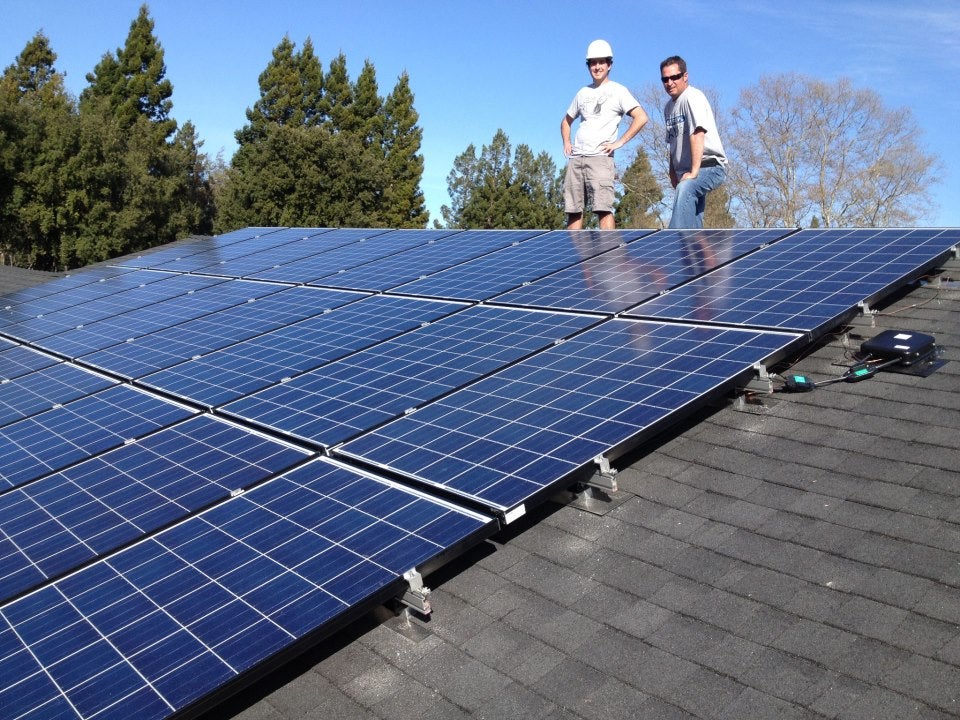Happy new year. 2013 is done and gone. The sun celebrated by flipping.
And here on earth it was a pretty good year for solar, the best yet, as
we will see in the coming months when all the numbers are tallied and
investigated. But now its 2014 and if you thought solar power was
slowing down, it’s just getting warmed up like a concentrating solar
power system in the desert and the industry is looking forward to
another record year as solar continues to evolve.
Analysts are predicting another year of double-digit growth for the solar industry
with roughly 40 gigawatts of new photovoltaics at the low end of most
analysts’ expectations. There will be a shift away from Europe as the
leading market for solar to Asia. The U.S. will also become a much more
prevalent market for solar power in 2014 with more homes businesses and
utilities adding solar.

To help accommodate the demand for solar policies will have to be modified in certain markets. Barry Cinnamon, CEO of Cinnamon Solar and founder and former CEO of Westinghouse Solar, told GTM Research
that policy changes suggested by utility commissions will be timid, but
coming. “The irresistible force of cheaper solar technology is stronger
than the immovable object of a high guaranteed rate of return for
utilities,” he wrote. The push from commissions won’t be stronger
because “utilities have money, political clout and legions of lawyers to
effectively lobby to retain their business model.”
One of the most attractive policies for solar are net-metering
programs, which allow solar owners and users to sell electricity
produced, but not used, by the system owner back to the grid. These
policies have come under fire in some markets as widely reported. “The
debate over net metering will intensify, but many traditional power
companies, which operate both regulated and deregulated businesses, will
begin to invest in distributed solar,
both outside and inside their territories,” observed Clean Power
Finance CEO Nat Kreamer, also writing for GTM Research. “Solar is too
profitable a business for utilities to ignore,” he added.
Kreamer’s company is a third-party ownership (TPO) company that
provides solar financing services for home and business owners through
solar installers. TPO options are popular in states where they’re
offered. Looking forward to 2014 he anticipated that more companies will
offer such services. “Marketing companies from outside of residential
solar will enter the market, driving growth up and customer acquisition
costs down,” he said. “Competition and cost structure will push existing
solar sales and installation companies to focus on their strengths.”
It will also be a good year for solar installers. “Small solar
companies will co-exist with large downstream installers,” Cinnamon
predicted. “Small installers will thrive because their overall
operating costs are low and their service levels are high. New financing
options, including bank loans and credit unions, will make it easier
for local installers (as well as electricians, roofers and HVAC
contractors) to compete with ‘no-money-down, free solar’ offers,” he
said.
While the solar manufacturing part of the solar industry will remain
focussed on balancing manufacturing with demand and producing more
efficient, lower-cost modules, solar experts are predicting more
emphasis will be placed on reducing costs in other aspects of the solar
industry. While policy can help by speeding up the permitting and
installation process there’s also a large opportunity to reduce the time
it actually takes to install the system itself. For instance, last year
TPO solar installer SolarCity
signed an agreement to purchase Zep Solar, which developed a mounting
and racking system that speeds the installation process, reducing the
cost of installing.
Cinnamon said these “mundane” parts of the rooftop solar array,
including solar roof flashings, grounding, racking, job preparation and
supply chains, will be a target for cost reductions. “RMI and Georgia
Tech just released a terrific time-and-motion study of rooftop solar
installations. Their conclusion: the biggest cost reduction
opportunities are with integrated racking, and in eliminating the array
of little nuts, bolts, wires, clips, pieces and parts that don’t add any
functional value to the system, but still need to be assembled on the
rooftop.”
One of the interesting companies to watch in 2014 will be First
Solar, observed Motley Fool contributor Travis Hoium. The company is the
world’s major producer of Cadmium Telluride (CdTe) thin-film
photovoltaics, which are cheaper but also significantly less efficient
than silicon PV modules (meaning they might be cheaper but they need
more space to produce power). “The low cost, low efficiency modules that
brought the company to solar dominance are slowly becoming obsolete,
and efficiency needs to be improved quickly,” Houim said.
Indeed, the company has been wildly successful at developing some of the world’s largest PV projects
but isn’t very competitive in rooftop sector where space is, at best,
limited. It’s becoming a more important market to be in and last year
the company purchased silicon PV manufacturer TetraSun.
“TetraSun's technology could allow for an entry into the residential
and commercial markets where First Solar has so far been shut out,”
Hoium said.
Source:- Solar reviews
No comments:
Post a Comment